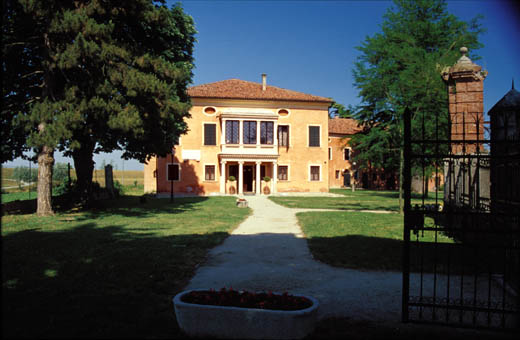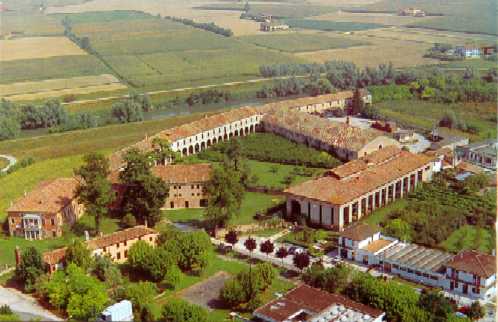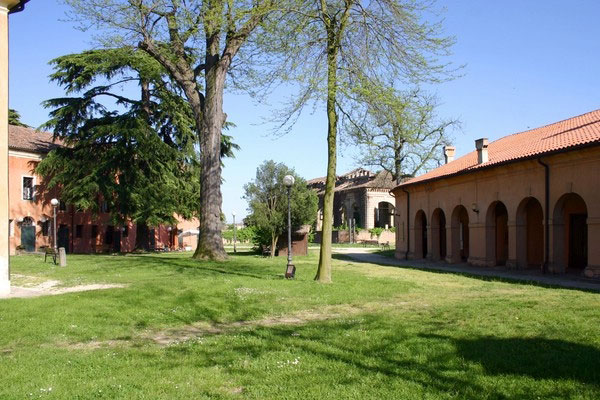|

A visit to the Benedictine Court in Correzzola is of utmost interest because it offers a close glance on life in the Veneto countryside, on the Benedictine agricultural system, and monastic culture.
The monks of the Church of St. Justine (Chiesa di Santa Giustina) in Padua had purchased this large estate from Countess Giuditta Sambonifacio in 1129. At that time, the monks undertook to guarantee life security to needy families, therefore they seriously reorganized the estate, transferred small plots of land scattered in the marshes and made the farmers themselves, who lived in the area and previously had another job, take part in land reclamation.
 The Court became the central office of the Benedictine activity; the central portion developed along the river and it was open to the South. The west wing was used as a lodge and a residence for the monks; the south wing contained barns, haylofts, and the planks used to defend the banks. Inside the wide courtyard there rose wells, pigsties, a furnace, a room for weaving activities, warehouses, hen houses, vegetable gardens, gardens and a large stable that could house up to 100 horses. The Court became the central office of the Benedictine activity; the central portion developed along the river and it was open to the South. The west wing was used as a lodge and a residence for the monks; the south wing contained barns, haylofts, and the planks used to defend the banks. Inside the wide courtyard there rose wells, pigsties, a furnace, a room for weaving activities, warehouses, hen houses, vegetable gardens, gardens and a large stable that could house up to 100 horses.
In the 1300s following some disasters, first of all the Black Death, the monks of St. Justine found themselves unable to manage and maintain their property. Therefore they turned whole villages into fiefs, which were transferred to noble families from Padua who did not comply with the Benedictine regulations.
From the second half of the 15th century the countryside entered a meaningful process of far-reaching land-reclamation works, and of masonry-house building for the farmers who used to live in huts made of thatch and branches.
In the middle of the 17th century, the agricultural crisis in Europe and the plague caused the decay of this system.
Only towards the middle of the 18th century was the direct management of the estate restored under the rule of abbé Ignazio Suarez: reclamation works were resumed, and improvements were planned.
 But the major events caused by Napoleon broke all works, and religious congregations were dissolved. As a consequence the duke of Lodi, Francesco Melzi d'Eril, took control of the Benedictine site and of all the stocks therein preserved. Upon his death his heir, Ludovico Melzi d'Eril, restored the fief he had inherited with mechanical reclamation works and the reorganization of farming and cattle breeding. The estate was later managed by his wife Josepine, who decided to rent the single plots of land to the farmers who lived there, or to other immigrant families. But the major events caused by Napoleon broke all works, and religious congregations were dissolved. As a consequence the duke of Lodi, Francesco Melzi d'Eril, took control of the Benedictine site and of all the stocks therein preserved. Upon his death his heir, Ludovico Melzi d'Eril, restored the fief he had inherited with mechanical reclamation works and the reorganization of farming and cattle breeding. The estate was later managed by his wife Josepine, who decided to rent the single plots of land to the farmers who lived there, or to other immigrant families.
At the end of the First World War, the estate identified as Tenimento Melzi d'Eril di Correzzola was alienated and its possessions, following various and casual circumstances, were transferred to the inhabitants of the Municipality of Correzzola.
|